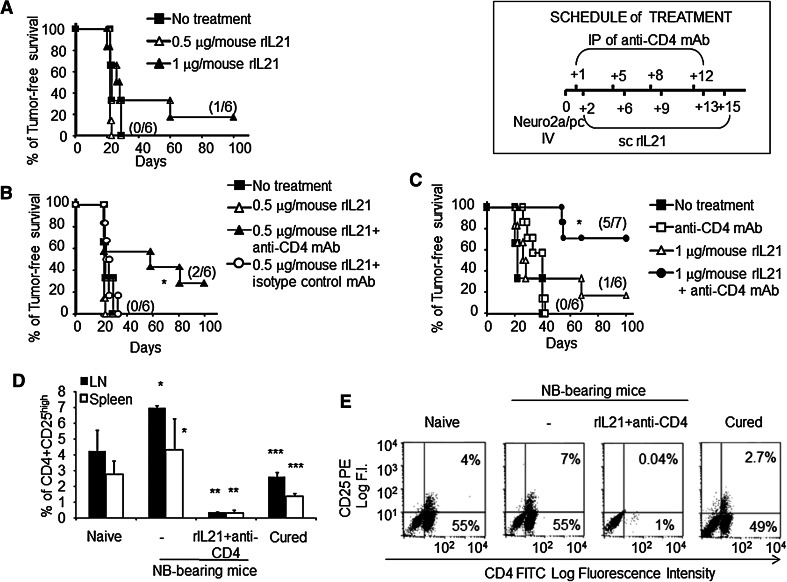Fig. 1.
Anti-CD4 mAb augments rIL-21 immunotherapy. a Kaplan–Meier analysis of A/J mice inoculated iv with a tumorigenic dose of Neuro2a/pc cells on day 0 and treated by sc rIL-21 at two dose levels or with vehicle only. Percentages of tumor-free mice are indicated on the y-axis, and the fraction of tumor-free mice of each group is given in brackets. b, c Combined administration of anti-CD4 mAb and rIL-21 (as described in the treatment schedule) results in a synergistic effect leading to increased cure rate both at the 0.5 (b) and at the 1 μg (c) dose level (*p = 0.03 and **p = 0.027, respectively) relative to a control group of mice receiving rIL-21 and an irrelevant IgG mAb. A representative experiment out of two with consistent results is shown. d Combined treatment leads to a strong decrease in CD4+ CD25high Treg cells in spleen (open bars p < 0.002) and LN cells (black bars p < 0.002) relative to untreated NB-bearing mice, which in turn showed increased proportions of Treg cells relative to naïve mice (p < 0.02 and p < 0.05, for LN and spleen, respectively). Tests were performed at 19 days after tumor cell challenge or at 140 days for cured mice. Treg cell percentages (mean ± SD) were lower in long-term cured mice relative to naïve (p = 0.03 or p = 0.02 for LN and spleen, respectively) and tumor-bearing mice (p < 0.002 or p = 0.047 for LN and spleen, respectively). e Representative two-color dot plot analyses of CD4+CD25+ cells from LN are shown

